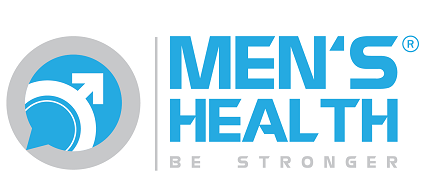As men enter their 40s, maintaining prostate health becomes increasingly important. The prostate, a small gland located below the bladder, plays a critical role in male reproductive health. However, it is also prone to conditions such as benign prostatic hyperplasia (BPH), prostatitis, and prostate cancer, especially as men age. Early detection and monitoring are key to managing prostate health effectively. This article provides an in-depth guide on essential tests, symptoms to watch for, and practical advice for men over 40 to maintain optimal prostate health.
I. Understanding the Prostate and Its Importance
The prostate gland is about the size of a walnut and surrounds the urethra, the tube that carries urine from the bladder out of the body. It produces seminal fluid that nourishes and transports sperm during ejaculation. Because of its location, any enlargement or inflammation of the prostate can affect urinary function, leading to symptoms that impact quality of life.

II. Why Focus on Prostate Health After 40?
Prostate issues become more common as men age. According to the American Cancer Society, about 60% of men in their 60s and up to 90% of men in their 70s and 80s have some degree of prostate enlargement. While not all prostate changes are cancerous, regular monitoring is crucial since prostate cancer is the second most common cancer among men worldwide.
III. Common Prostate Conditions in Men Over 40
1. Benign Prostatic Hyperplasia (BPH)
BPH is a non-cancerous enlargement of the prostate gland. It can cause urinary symptoms such as difficulty starting urination, weak urine stream, frequent urination (especially at night), and incomplete bladder emptying.
2. Prostatitis
Prostatitis refers to inflammation or infection of the prostate, which can cause pain, urinary problems, and sometimes flu-like symptoms.
3. Prostate Cancer
Prostate cancer develops when abnormal cells grow uncontrollably in the prostate. Early stages often have no symptoms, which is why screening is vital.

IV. Essential Tests for Prostate Health
Regular screening and testing can detect prostate issues early, improving treatment outcomes. Here are the key tests recommended for men over 40:
1. Digital Rectal Exam (DRE)
A DRE involves a healthcare provider inserting a gloved, lubricated finger into the rectum to feel the prostate for abnormalities such as lumps or hard areas. This quick exam helps detect prostate enlargement or suspicious growths.
2. Prostate-Specific Antigen (PSA) Blood Test
PSA is a protein produced by prostate cells. Elevated PSA levels may indicate prostate cancer, BPH, or prostatitis. The PSA test is a simple blood test that measures the amount of PSA in the bloodstream. Men over 40, especially those with risk factors such as family history or African ancestry, should discuss PSA screening with their doctor.
3. Urinalysis
This test checks for signs of infection or blood in the urine, which can be related to prostate problems.
4. Transrectal Ultrasound (TRUS)
If abnormalities are found during DRE or PSA testing, a TRUS may be ordered. It uses sound waves to create images of the prostate and guide biopsies if needed.
5. Prostate Biopsy
In cases where cancer is suspected, a biopsy involves taking small tissue samples from the prostate for laboratory analysis.
V. Symptoms to Monitor for Prostate Issues
Men should be vigilant about changes in urinary habits and other symptoms that may indicate prostate problems:
- Difficulty starting or stopping urination
- Weak or interrupted urine flow
- Frequent urination, especially at night (nocturia)
- Pain or burning during urination
- Blood in urine or semen
- Painful ejaculation
- Lower back, hip, or pelvic pain
If any of these symptoms occur, it is important to consult a healthcare professional promptly.

VI. Lifestyle Tips to Support Prostate Health
Alongside regular screenings, lifestyle choices can help maintain prostate health:
- Healthy Diet: Emphasize fruits, vegetables, whole grains, and lean proteins. Foods rich in antioxidants, like tomatoes (lycopene), may reduce prostate cancer risk.
- Regular Exercise: Physical activity helps maintain a healthy weight and reduces inflammation.
- Limit Alcohol and Caffeine: Excessive consumption can irritate the bladder and prostate.
- Stay Hydrated: Drink plenty of water but reduce fluid intake before bedtime to minimize nocturia.
- Avoid Smoking: Smoking is linked to increased risk of aggressive prostate cancer.
- Routine Medical Checkups: Maintain regular visits with a healthcare provider for timely screening and advice.
VII. Prostate Health and Men’s Health Vietnam Center: Comprehensive Care
If you experience persistent urinary symptoms or have risk factors such as a family history of prostate cancer, African descent, or previous abnormal test results, consulting a urologist is recommended. Specialists can provide comprehensive evaluation, advanced diagnostic testing, and personalized treatment plans.
Men’s Health Vietnam Center specialize in male-specific health issues, including prostate health. These clinics offer:
- Expert prostate screening and diagnostics
- Personalized treatment plans for BPH, prostatitis, and prostate cancer
- Hormonal evaluations and management
- Lifestyle counseling and preventive care
- Access to minimally invasive procedures and advanced therapies
If you are over 40 and concerned about your prostate health, scheduling a consultation at a Men’s Health Vietnam Center can provide peace of mind and proactive care.
- Address: 7B/31 Thanh Thai Street, Ward 14, District 10, Ho Chi Minh City, Vietnam
- Website: menhealth.vn
- Fanpage: facebook.com/trungtamsuckhoenamgioi
- Contact: (+84) 902 353 353
 0902 353 353
0902 353 353 Giờ làm việc: 08:00 - 20:00
Giờ làm việc: 08:00 - 20:00 7B/31 Thành Thái, Phường Diên Hồng, TP. HCM
7B/31 Thành Thái, Phường Diên Hồng, TP. HCM
